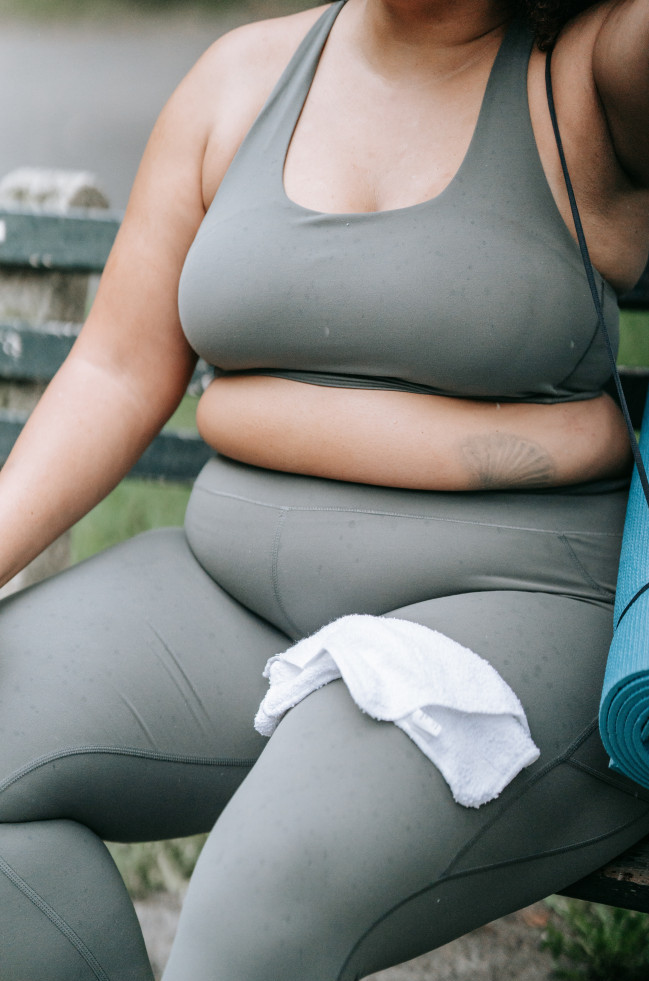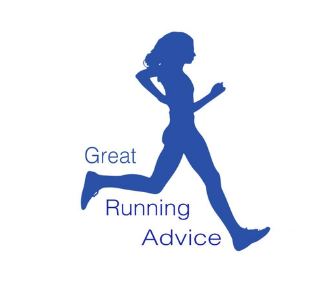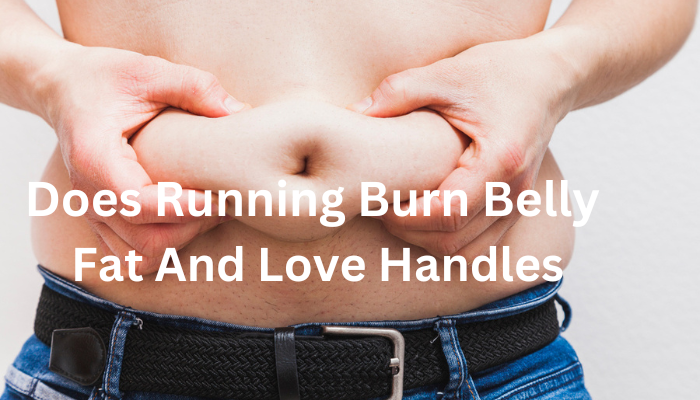Nobody likes having belly fat and love handles. We will look at various ways to try to lose these. Many ask, does running burn belly fat and love handles?
Does Running Burn Belly Fat And Love Handles?
Yes, running will help burn belly fat and love handles. Running is one of the best ways to target and reduce belly fat and fat accumulated at the waist (love handles). Most experts recommend working up to running 30 – 60 minutes a day, 4 – 5 days a week, for optimal results.
Running helps you burn belly fat and love handles by improving the fat-burning process in your body. To lose weight, our body needs to be in a calorie deficit, which means we need to burn more calories than we take into our bodies. To lose one pound, we need to burn 3,500 more than we consumed. So there is no quick fix to losing belly fat or love handles. An average person burns between 300 and 400 calories running 5km
Everybody must realize that bodies vary from person to person when performing any exercise, including running, as it is impossible to say what body parts will lose the most weight.
How Does Running Burn Belly Fat And Love Handles?
Running helps burn belly fat, and love handles by the following.
- Helps increase metabolism
- Improves sleep quality
- Helps reduce stress
- It gets a lot of muscles working
- Helps curb appetite
- Continues to burn calories even when finished.
Helps Increase Metabolism
Running helps increase metabolism as your metabolism increases to sustain your energy while you run. It works by burning calories and tapping into your fat storage to create energy. The longer we run, and the more often we run, the more belly fat we should burn. But like with any exercise, after a while, our body will get used to our exercise routine, and then our metabolism will slow down again, resulting in a decreased fat burn.
Improves Sleep Quality
Running has been proven to improve sleep quality. Specifically, moderate-to-vigorous exercise can increase sleep quality for adults by reducing sleep onset – or the time it takes to fall asleep – and decreasing the time they lie awake in bed during the night.
Running can also help with sleep apnea, insomnia, and restless leg syndrome.
Helps Reduce Stress
Running helps reduce stress which in turn helps us lose belly fat and our love handles. In addition, running lowers stress hormones and stimulates the production of endorphins, which together help foster relaxation. Finally, when running outside, we receive many benefits, like lessening the feeling of being lonely and isolated, which helps reduce stress, depression, and anxiety in the short term.
Running with friends or family is particularly good for stress levels. This kind of social interaction is a good distraction from everyday stresses.
Gets Lots Of Muscles Working
When running, we use a lot of muscles if we are running with the correct form. This, in turn, helps burn fat as our bodies are toned.
Core muscles – these muscles ensure control and stability of all movements during running. A strong core is key to effective movement. For example, while running, where your arms and legs move in a circular motion, the central part of the body must be stable.
Hip Flexors – these muscles are located in the front of the hips, right above the thighs. They connect the femur, lower back, hips, and groin. While running, they are used when lifting and moving the legs forward at the hips.
Glutes – these are located in the buttocks and consist of three primary muscles: gluteus maximus, gluteus medius, and gluteus minimus. The gluteus maximus is the most significant muscle in the body. Strong glutes play an essential role in running since they are the muscles that move you forward. In addition to hip flexors, as explained earlier, they are also responsible for moving the leg forward at the hip.
Quadriceps – is a group of four long muscles at the front of the thigh and is some of the human body’s longest and most complex muscles. While running, they extend the leg at the knee. They are also responsible for straightening and stabilizing your knees when you run.
Hamstrings – these have the opposite role in running from the quadriceps. When running, they bend the knee, that is, to lift the feet towards the buttocks.
Calf muscles – these are situated on the back of the lower leg. They stretch the feet during reflection, that is, every time the foot hits the ground. Likewise, the calf muscles are responsible for absorbing impact on landing, providing balance and mobility to the ankle. Plantar flexion is the movement that activates the calf muscles (the action of stretching the foot downwards).
Tibialis anterior – this muscle is situated on the anterior of the lower leg, and its task is to bend the foot upwards. Dorsiflexion is the action of raising the foot upwards.
Heart – is the most important muscle in the body, as without this, we can’t do anything. Our body needs a constant supply of oxygen, which, in addition to glucose, provides us energy. While running, this process becomes much more pronounced as you strain your body and require additional energy. For runners to be able to run fast and maintain that pace for a more extended period, the lungs need to bring enough oxygen into the blood. After that, the heart sends oxygen-rich blood to cells around our body. Therefore, runners need to get enough air into their lungs and enough oxygen into their blood supply.
Upper body muscles -. Some upper body strength is required for running. Your arms help drive you forward, building momentum—particularly the latissimus dorsi, shoulders, and deltoids. Also, having a strong back and shoulders will enhance your running economy. Not only will stronger arms provide more propelling power, but having the upper body strength to stay upright throughout your run can help prevent a hunched posture. Therefore, your posture during a run is vital to your running economy.
Helps Curb Appetite
Running stimulates certain changes in the body. It increases blood flow to the heart and leg muscles, slows digestion, and suppresses particular hormones, such as ghrelin. Ghrelin is the hormone responsible for hunger. It stimulates appetite and food intake and promotes fat storage. Exercise also increases the production of the hunger-suppressing hormone peptide YY, further reducing appetite and food intake. This is why runners are often not hungry after exercising and can feel nauseous after food, including post-workout gels and bars.
Continues To Burn Calories Even When Finished
Even though our run is over, our body continues to burn calories resulting in reduced belly fat. This process is called excess post-exercise oxygen consumption (EPOC), and it’s what people generally refer to as the “afterburn effect.
The more intense your workout is, the more EPOC you’ll likely experience. That’s because for EPOC to occur, your muscles must work to the point of fatigue. So if you’re doing something like speedwork or strength training, you should theoretically deplete your muscles’ energy by the end of your session. That said, the amount of calories the average person will burn with EPOC isn’t as much as you’d think.
Final Thoughts
We have now looked at does running burns belly fat and love handles. We have explained in detail how each of the following helps:
- Helps increase metabolism
- Improves sleep quality
- Helps reduce stress
- It gets a lot of muscles working
- Helps curb appetite
- Continues to burn calories even when finished.
Please comment below if you have any questions, comments, or anything to add.

